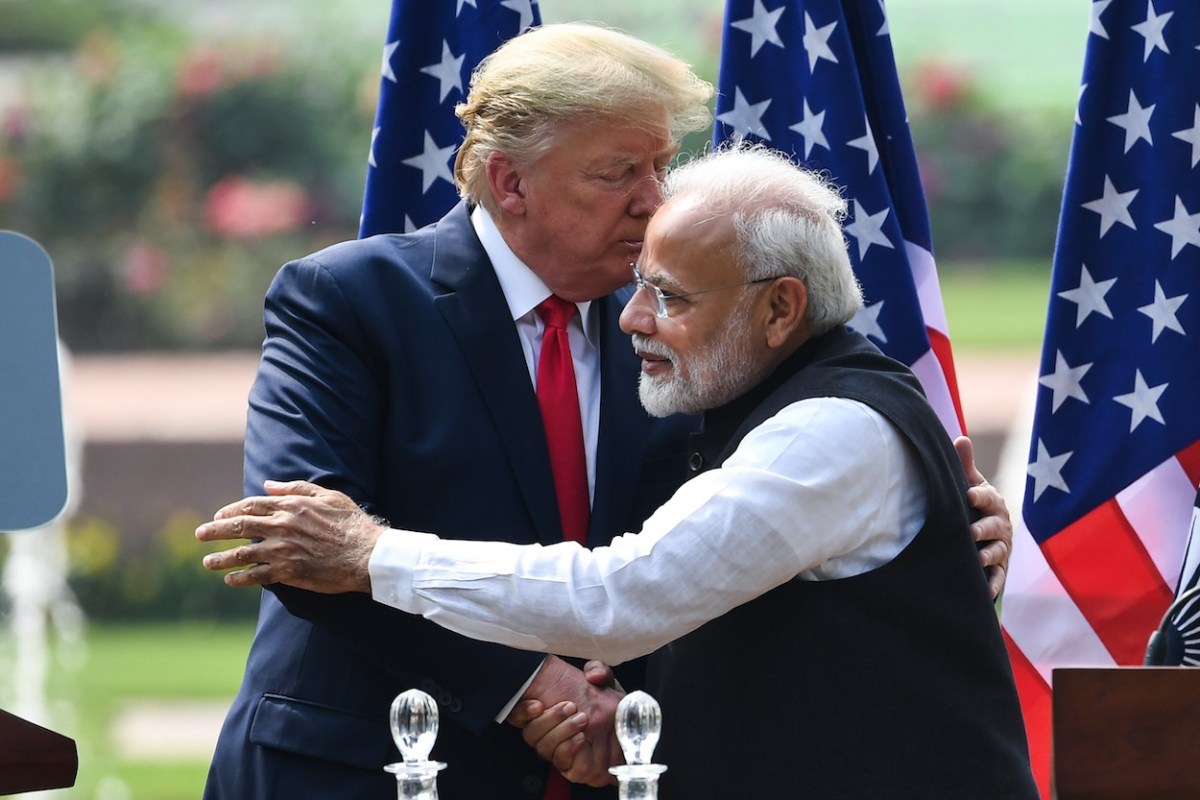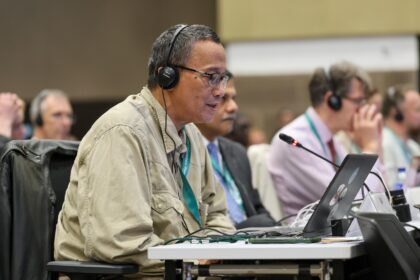India is caught in a geo-strategic chess game between China and the US. China has been mounting pressure on India since early May by deploying large numbers of troops along the border in Ladakh. Meanwhile the US is also exerting pressure on India for its own strategic aims.
All in all, India is losing its strategic autonomy; thus it behaves like a pendulum by simultaneously agreeing with the US and China.
A few significant events support this notion. First is the text of the Sino-Indian joint statement issued after the meeting on September 10 between Indian External Affairs Minister Subramanyam Jaishankar and his Chinese counterpart Wang Yi on the sidelines of the ministerial meeting of the Shanghai Cooperation Organization.
The first item of the joint statement says, “Both sides should take guidance from the series of consensus of the leaders on developing India-China relations, including not allowing differences to become disputes.” This reflects that India has agreed to the Chinese demand to abide by the agreements and consensus reached previously between the countries’ leaders.
The next thing to consider is the separate statements issued by India and the US regarding a virtual 2+2 virtual meeting between the joint secretaries of the External Affairs Ministry and Defense Ministry of India and their respective US counterparts, the State Department and Defense Department, the day after the Jaishankar-Wang meeting.
According to Indian media reports, the third India-US 2+2 ministerial meeting between Jaishankar and Indian Defense Minister Rajnath Singh and their American counterparts Secretary of State Mike Pompeo and Defense Secretary Mark Esper was scheduled for this month. During this round of meetings, the two sides planned to sign the last of the US-India defense foundational agreements, the Basic Exchange and Cooperation Agreement (BECA).
India and the US have already inked three other foundational agreements, namely the Logistics Exchange Memorandum of Agreement (LEMOA) in 2016, the Communications Compatibility and Security Agreement (COMCASA) in 2018, and the Industrial Security Annex (ISA) to the India-US General Security of Military Information Agreement (GSOMIA) in 2019.
The BECA is supposed to enable India to avail US expertise on geospatial intelligence and sharpen the accuracy of weapons and automated hardware systems used for military purposes.
It seems that India has postponed the 2+2 ministerial meeting and signing of the BECA agreement for the time being. The Indian statement reads, “The inter-sessional meeting mechanism was set up pursuant to the 2+2 Ministerial. The two sides agreed to continue these discussions in the future.”
However, the US statement says, “They looked forward to preparing for the US-India 2+2 Ministerial Dialogue later this year.”
The US has been pushing India hard to transform the Quadrilateral Security Dialogue into an Asian NATO, although Jaishankar has repeatedly denied that India is seeking a NATO-like military alliance with the US. The US intention was explained in by US Deputy Secretary of State Stephen Biegun in a webinar organized by the US-India Strategic Partnership Forum on August 31.
Again, under US pressure, India decided to host the Quad and 2+2 India-US ministerial meetings next month. The Hindustan Times reports, “[The] United States, India, Australia, and Japan are in conversation to decide the venue and date of [a] Quad security dialogue next month, followed by the 2+2 dialogue between India and the US here.
“As of now, Japan is an option for the Quad dialogue, or both [the] Quad and 2+2 dialogues could be held back to back in New Delhi late next month.”
Indian Prime Minister Narendra Modi’s myopic China strategy is culpable for his country’s loss of strategic autonomy.
An Indian strategic analyst who wants to remain unnamed considers that Ram Madhav, national general secretary of the Bharatiya Janata Party (BJP) and its leading strategist, and Modi’s henchman Amit Shah suggested that the prime minister take revenge for the defeat in the Sino-Indian War of 1962 and take back Aksai Chin, now in China-administered Ladakh.
They assumed that China would collapse economically because of the Covid-19 pandemic in early 2020. That would have been an opportunity for India to rebalance its stance with China.
Modi’s strategic aide Jaishankar claims that India is now in the sixth phase of strategic evolution since its decolonization from British rule in 1947. He claims that India should take risks and join with the US alliance. Since Modi became the prime minister in 2014, India has entered this stage, in his assertion.
Since Modi took charge, India and the US have signed three foundational strategic agreements, and the final deal is pending, as noted above.
The US needs a strong and reliable partner in Asia because China has emerged as a challenger to its previously unquestioned global dominance. The US has been eagerly trying to forge a military and strategic partnership with India to contain China.
Should the US fail to forge a partnership with India and add it to its alliance as soon as possible, US dominance in Asia will end.
There is a vigorous debate in the United States among the government, academia, think-tanks and media over whether the US should withdraw its troops from allied countries, including Germany and South Korea. Some suggest that troops should be diverted to contain China. For many American strategic analysts, China is the primary foe, not Russia. Therefore the US is also constantly mounting pressure on China’s Asian neighbor, India.
However, India claims to have maintained its strategic autonomy as a middle power. It has developed international relations through BRICS, the Shanghai Cooperation Organization, the Quad, and the partnership with the US.
So it is understandable that India, a middle power aspiring for to become a superpower in the future, claims that it has been exercising its own strategic autonomy.
The United States, the underwriter of the post-World War II so-called liberal world order, considers that only it has the right to dominate the world. Unlike the erstwhile USSR, China came on to the world stage with tremendous economic clout backed by military might and technological advancement. It has proved problematic for the US to meet China’s challenge in the quarter-century after the end of the Cold War.
Former US president Barack Obama initiated the grand strategy of a “pivot to Asia” to contain China. His successor Donald Trump’s previous secretary of state, Rex Tillerson, launched the Indo-Pacific Strategy in 2017 aiming to manage China and maintain US hegemony in the world.
For this, it is known that the United States needs a firm friend in the Asia-Pacific region. Among the candidates are Australia, Japan, South Korea, but India could be the most suitable friend of the US to contain China.
Japan and South Korea are very much focused on trade. They have little interest in geopolitics and grand strategies, and even if they were, they have limited strategic capabilities. Their geographical location is less favorable than India because they have no land borders with China.
Besides, American strategists are mindful that India has a maritime dimension as an extra advantage to limit China. Australia’s importance is also limited to the Eastern Pacific. In such a scenario, only India can play a vital role in the US grand strategy.
China’s grand strategy is to put India behind it in the long run in the Asia-centric world order. As a short-term tactic, China is pushing for India’s neutrality in the strategic balance with the United States.
One of Modi’s skills is the master to tell people what they want to hear. He went to Washington and vowed to Trump that he would play a crucial role as a US ally. Modi also contented Xi Jinping by promising a consensus on making an Asian Century and opening the multipolar world.
There is a proverb in the Nepali language, “Ekai mandapma behulako ko pani bau behuliko pani bau.” The literal translation of the saying is “trying to be the father of both the bridegroom and the bride in the same marriage ceremony.” The adage represents a person who tries to master two polar opposite and mutually exclusive events simultaneously.
Modi has been trying to do this since 2016 in the case of China and the US. He believes that Beijing and Washington can be swayed like Indian voters have been influenced by his hollow promises. However, such things are of sporadic utility in diplomacy because counterparts always want accountability for agreement and consensus.
It seems Modi overlooked many facts before going for an alliance with the US.
First, India and its northern neighbor, China, shares a 3,488-kilometer land border and keeps a stern eye on India’s every strategic move. During the Cold War, India had no direct border with the USSR or the US.
Second, in 1962, India and China were comparable. The size of their economies and military and strategic strength were more or less the same. Today, however, China’s economy is much larger than India’s, and its defense budget is three times as large.
Third, Modi overlooks the fact that China has been winning on every front without fighting. In contrast, the US has been fighting everywhere without winning a single front for the last two decades.
Fourth, India is trying for an alliance with the US while Washington has been betraying its partners by stepping back from the majority of its international commitments.
America’s partners are anxious, yet India is striving hard for an alliance with the US despite its muscular use of tariffs. Washington revoked India’s preferential access to the US market under the Generalized System of Preferences (GSP) in June 2019.














